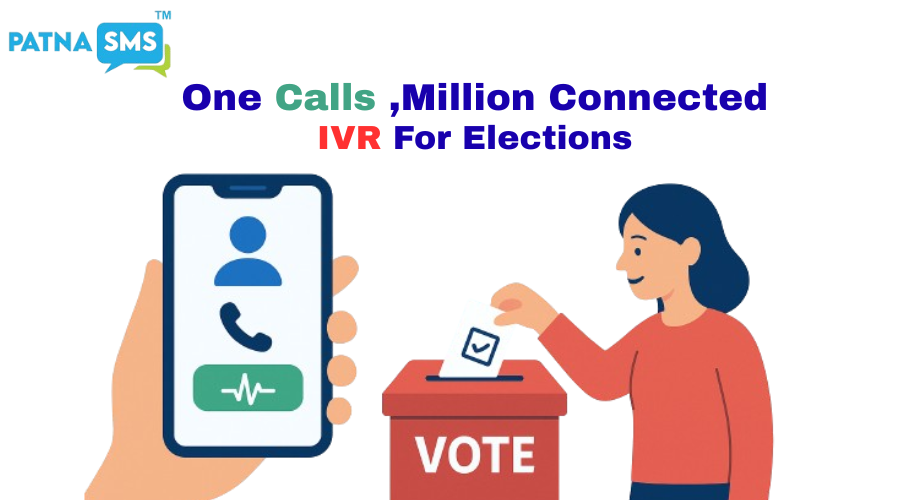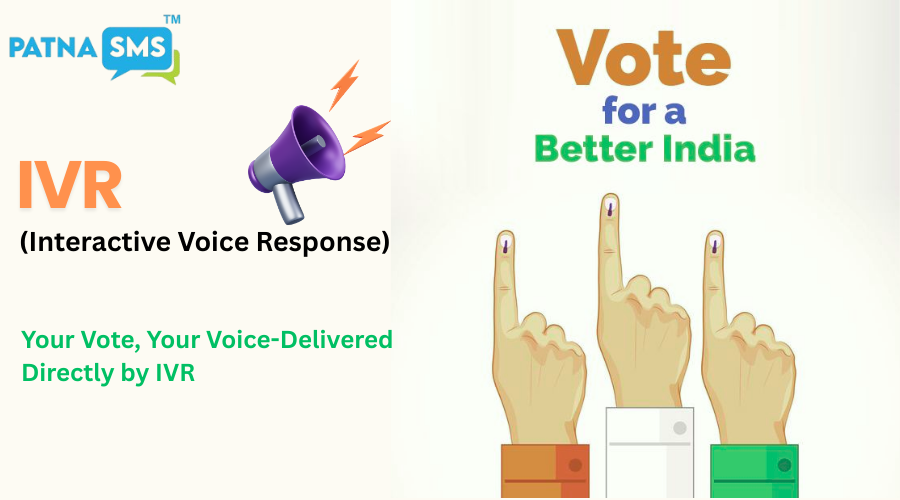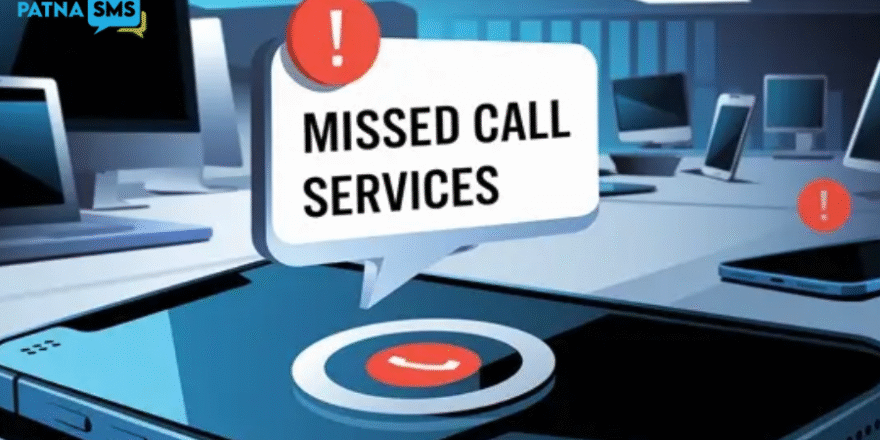IVR for Election, In a democratic nation, elections are the foundation of people’s power. Every vote counts, and every citizen has the right to participate in shaping the future of their country. However, one of the biggest challenges during elections is ensuring maximum voter awareness and turnout. Political parties, election commissions, and campaigners constantly search for effective tools to reach citizens in large numbers with minimal costs.
This is where IVR for Election (Interactive Voice Response) plays a crucial role. IVR technology enables candidates, parties, and election authorities to engage with millions of voters instantly using automated voice calls. From spreading awareness about voting dates to sharing candidate manifestos, IVR ensures that no voter is left uninformed.
In this article, we will explore how IVR for Election works, its benefits, use cases, strategies for success, and why it has become one of the most powerful communication channels in modern political campaigns.
What is IVR for Election?
IVR (Interactive Voice Response) is an automated telecommunication system that allows voters to interact with pre-recorded voice messages through their phone keypad. Instead of human agents, the system handles calls and provides interactive options such as:
- “Press 1 to hear candidate details”
- “Press 2 to know your polling booth location”
- “Press 3 to connect with campaign volunteers”
IVR for Election is specifically designed to promote election-related communication. It helps candidates and authorities deliver key information like voting dates, manifestos, awareness campaigns, and even collect feedback from voters.
Unlike SMS or email, which may go unread, IVR ensures direct voter engagement through voice—a medium that feels more personal and impactful.
Why is IVR Important for Elections?
1. Mass Outreach in Seconds
Elections involve reaching millions of voters across different regions. IVR can deliver voice messages in regional languages, ensuring a wider and more inclusive reach.
2. Multilingual Communication
India alone has 22 official languages and hundreds of dialects. IVR systems can easily record messages in local languages, helping campaigns connect with voters emotionally.
3. Cost-Effective Campaigning
Compared to physical rallies, posters, or advertisements, IVR calls are extremely affordable while covering a larger population.
4. Real-Time Feedback
IVR isn’t just about delivering information—it also collects voter opinions through keypad inputs, allowing candidates to understand voter sentiment.
5. Encouraging Higher Voter Turnout
By reminding voters of polling dates, sharing polling booth details, and motivating them with awareness campaigns, IVR increases voter participation.
How Does IVR for Election Work?
The process of using IVR for Election is simple yet powerful:
- Message Preparation – Political parties or election commissions prepare pre-recorded voice messages in multiple languages.
- Call Campaign Setup – The IVR system uploads voter databases (phone numbers) and schedules automated calls.
- Interactive Options – Voters can choose options like listening to the candidate’s manifesto, registering complaints, or connecting with live agents.
- Voter Feedback Collection – The system records responses like “Press 1 if you support Party A, Press 2 if you support Party B.”
- Data Analysis – Campaigners analyze the collected data to plan further strategies.
Key Features of IVR for Election
- Automated Voice Calls to millions of voters
- Multi-language Support for local and regional reach
- Customizable Menus (candidate details, voting reminders, awareness messages)
- Real-time Analytics to measure campaign success
- Scalability – handles thousands of concurrent calls
- Call Recording & Feedback Collection
- Integration with SMS and WhatsApp Campaigns for a multi-channel strategy
Benefits of IVR for Election Campaigns

1. Personalized Voter Connection
A voice message feels more personal than a written SMS or email. When voters hear a candidate’s voice, they feel a stronger connection.
2. Wider Reach in Rural Areas
Many rural voters don’t use smartphones or the internet. IVR ensures accessibility even on basic mobile phones.
3. Time-Saving Automation
Instead of relying on manual calling, IVR automates the process, saving time and resources.
4. Election Awareness
From voting rights to booth details, IVR helps reduce confusion among voters, ensuring smoother elections.
5. Increased Voter Engagement
Voters can ask questions, give feedback, and even pledge their vote through interactive calls.
Use Cases of IVR in Elections
- Voter Awareness Campaigns
- Explaining the importance of voting
- Reminding citizens of election dates
- Candidate Promotion
- Sharing candidate details, party ideology, and promises
- Polling Booth Information
- Helping voters locate their nearest polling station
- Manifesto Sharing
- Broadcasting pre-recorded audio of party manifestos
- Feedback Collection
- Understanding voter expectations and issues
- Volunteer Recruitment
- Engaging supporters to join election campaigns
- Complaint Registration
- Allowing voters to report election-related problems
IVR for Election vs Traditional Campaign Methods
| Traditional Methods | IVR for Election |
|---|---|
| Expensive rallies & advertisements | Affordable, automated voice campaigns |
| Limited reach | Mass reach within seconds |
| Difficult to measure effectiveness | Real-time analytics available |
| Restricted to local regions | Scalable across entire country |
| One-way communication | Interactive engagement with voters |
Best Practices for Using IVR for Election
- Keep Messages Short & Clear
Long calls can irritate voters. Keep recordings under 60 seconds. - Use Local Languages
Speaking in the voter’s regional language creates trust. - Include a Call-to-Action
Example: “Press 1 to pledge your vote, Press 2 to know your polling booth.” - Avoid Overcalling
Too many calls may annoy voters. Timing should be strategic. - Respect Privacy Laws
Ensure compliance with telecom and election commission guidelines. - Combine with Other Channels
Use IVR along with SMS, WhatsApp, and social media for a complete campaign.
Real-Life Example of IVR in Elections
- Indian Elections: Several political parties have used IVR to spread awareness about their candidates and manifestos in multiple states.
- US Elections: Automated calls have been widely used to remind voters about registration deadlines and polling booth details.
- African Nations: IVR systems are helping increase awareness in rural areas where literacy rates are low.
Challenges in Using IVR for Election
- Spam Concerns: Overuse may make voters ignore calls.
- Regulatory Restrictions: Some regions limit automated calls.
- Database Accuracy: Wrong numbers may waste resources.
- Language Barriers: Proper translation is required for effective communication.
Future of IVR for Election Campaigns
As technology evolves, IVR will become even more powerful by integrating with:
- AI-Powered Voice Bots – for natural, human-like conversations
- Data Analytics – for predicting voter behavior
- Omnichannel Platforms – integrating IVR with WhatsApp, SMS, and social media
- Voice Biometrics – for secure and personalized voter interaction
The future of election campaigns is digital, and IVR will remain one of the most trusted tools for mass political communication.
Conclusion
In a world where elections are becoming increasingly competitive, effective communication is the key to success. IVR for Election empowers political parties, candidates, and election commissions to engage millions of voters directly, cost-effectively, and in their own language.
By delivering clear messages, sharing manifestos, reminding citizens about voting dates, and collecting feedback, IVR ensures that every voter feels informed and involved.
Whether it’s boosting voter turnout, strengthening democracy, or building stronger connections between candidates and the public, IVR for Election is undeniably the smartest tool for promoting elections in the digital age.





